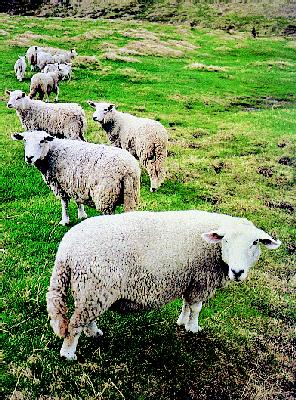| 2002 |

|
YEAR BOOK |
QUEEN’S UNIVERSITY BELFAST [1] , DEPARTMENT OF AGRICULTURE AND RURAL DEVELOPMENT (NI)[2] & RADIOLOGICAL PROTECTION INSTITUTE OF IRELAND, DUBLIN [3]
|
The effects of ‘Prussian Blue’ on plant growth and
soil microbiological processes in upland pasture
|

Very little information exists concerning the fate of AFCF in the environment, whether applied directly to pasture or excreted by animals via faeces. Information on any ecological effects is clearly required to evaluate fully the use of AFCF as an overall agricultural countermeasure strategy.
This project investigated the effects (in field investigations and controlled greenhouse studies) of AFCF on plant growth, plant bio-diversity, biomass, soil microbiological activity, invertebrate fauna, and its stability in upland pasture in Counties Antrim (NI) and Cavan (RoI).
The results obtained showed:
-
Four/five months after AFCF applications to upland pasture it
had little or no effect on plant growth, both in field
trials and a controlled greenhouse study.
-
There were no effects of AFCF on plant bio-diversity,
vegetation biomass and soil microbial
processes.
-
AFCF had no effect on 137 Cs levels in the various
species studied in upland field trials. However, it
reduced 137 Cs uptake by Eriophorum vaginatum, an
upland species, in a controlled greenhouse study.
-
Most of the AFCF at the time of sampling (4/5
months after application) remained in the upper
peat soil layers (litter/moss and root matt). There
was some indication that the AFCF chemical
structure was degraded, as indicated by the
presence of the cyanide moiety especially in the
litter/moss layer and root matt. However, any free
cyanide in the soil is likely to be metabolised to
harmless compounds by soil bacteria.
-
AFCF had no effects on invertebrate fauna as reflected in the
range of carabid beetle species and their numbers in upland
pasture treated with AFCF.
-
The results suggested that AFCF may be safely used as a radio-caesium
countermeasure within peatland ecosystems without
any significant impact on the key environmental factors of
plant growth, plant bio-diversity, biomass, soil microbial
activity or carabid beetles.
Contact: Professor Jack Pearce, Food Science Division,
Department of Agriculture & Rural Development, Newforge
Lane, Belfast BT9 5PX; Tel: +44 (028) 90255349;
Fax: +44 (028) 90255006; E-mail: [email protected]